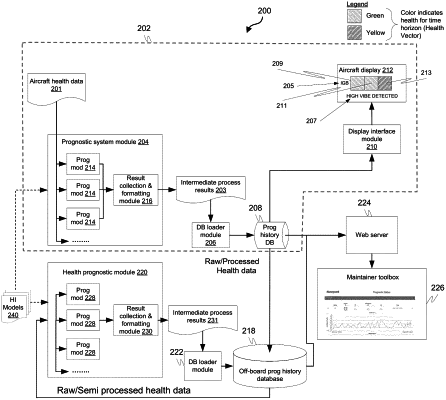| CPC G07C 5/0816 (2013.01) [B64F 5/60 (2017.01); G06F 16/22 (2019.01); G06F 16/955 (2019.01); G07C 5/0841 (2013.01)] | 20 Claims |

|
1. A method, comprising:
retrieving, by one or more processors, aircraft health data for a plurality of aircraft components;
estimating, by the one or more processors, component health status information including a prognostic indicator for the plurality of aircraft components based on the aircraft health data, wherein:
the estimating includes generating the prognostic indicator using a machine learning model trained using historical aircraft health data known to be associated with a previously reported fault, wherein the historical aircraft health data comprises a first portion tagged as healthy data and a second portion tagged as unhealthy data;
the machine learning model embodies a deep autoencoder neural network, wherein the autoencoder includes at least one input node and at least one output node, and wherein input data comprising the historical health aircraft data is provided at the at least one input nodes and reconstructed as output data at the at least one output node; and
the prognostic indicator provides an indication of an estimated health of a component in a plurality of future time horizons; and
causing, by the one or more processors, display of the prognostic indicator for the plurality of future time horizons for a specific component on a display.
|